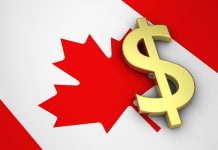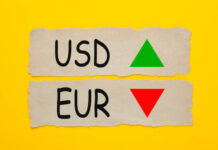Personal income was basically unchanged in June, down $3.5 billion, while personal consumption expenditures were up slightly, by 0.1 percent. However, in real terms, these measures were even weaker.
Personal Income Receipts on Assets Plunge in June
Personal income was almost flat in June, declining $3.5 billion after an increase of $53.2 billion in May. However, the details were not as weak, especially in terms of wages and salaries. Wages and salaries increased $30.8 billion during the month with both goods-producing industries as well as services-producing industries recovering somewhat compared to the previous month. Wages and salaries in the goods sector were up $4.2 billion while they were up $22.9 billion in the services sector. However, all this effort by the producing side of the economy was more than reversed by personal receipts on assets. That is, personal interest income came down another $13.9 billion in June, the third consecutive $13.9 billion decline, while personal dividend income declined $29.9 billion after increasing $45.6 billion in May. This meant that personal income receipts on assets were down $43.9 billion during the month.
Meanwhile, disposable personal income was flat in June while real disposable personal income was even weaker, down 0.1 percent. After a strong showing during the first five months of the year disposable personal income was, perhaps, one of the biggest changes for the June personal income and spending release.
Personal Spending Was Also Weak
At the same time, both nominal and real personal spending were revised up in May but were almost flat in June. Nominal personal spending was up 0.1 percent after an upwardly revised 0.2 percent increase in May, while real personal spending was flat in June after an upwardly revised 0.2 percent in May.
Overall spending was up $8.1 billion after increasing $20.1 billion in May. Goods consumption was down $16.3 billion with the largest decline in nondurable goods consumption, down $11.0 billion versus a decline of $5.3 billion for durable goods. Meanwhile, spending on services was up $24.4 billion during the month, down from $31.1 billion in May, all seasonally adjusted at annual rates.
Second Quarter Ends on a Low Note
Although the quarterly numbers were released last week and both GDP as well as PCE recovered compared to the first quarter of the year, this release shows that both income as well as consumption ended the quarter relatively weak. Furthermore, we saw in last week’s release that the revisions to the national account numbers showed a much lower personal saving rate than what the BEA had been reporting. That is, there has been a marked lowering of the personal saving rate compared to what we had previously. May’s saving rate was originally reported at 5.5 percent. Now, it is only 3.9 percent while June’s rate was 3.8 percent.















